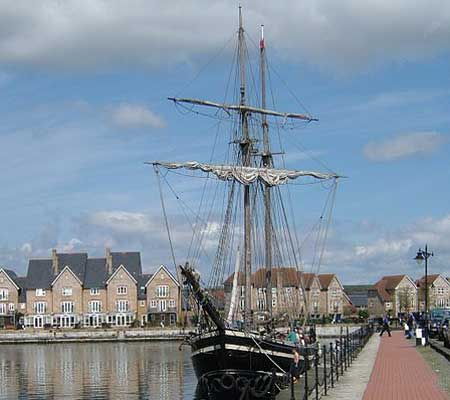Chatham dockyard's bid for Unesco World Heritage Site status is blocked
Kent dockyard loses out to Lake District national park as UK's next world heritage site

The historic dockyard at Chatham, Kent, which was once the home of Tudor warship building and the birthplace of Nelson’s HMS Victory, has seen its bid to become a Unesco World Heritage Site blocked for a second time.
The Medway docks, which were one of six sites being considered to be put forward as a potential World Heritage site by the Government, lost out to the Lake District under plans announced by the Culture minister Ed Vaizey on Thursday.
The United Kingdom National Commission for Unesco said Chatham’s application for world heritage status – which included the dockyard, Great Lines, Fort Amherst, Upnor Castle and the River Medway, should “not go forward for nomination”.
Instead, the Lake District national park in Cumbria will be put forward as the UK’s next world heritage site in January 2016.
It was the second blow to Chatham’s hopes after the docks lost out to the Forth Rail Bridge in Scotland for nomination in June 2012.
Bill Ferris, chief executive of Chatham's Historic Dockyard, described the announcement as "very disappointing". He told Kent Online: “Although the news is obviously very disappointing after so much work has gone into the process, all is not lost.
“That process of celebrating the heritage and placing it at the forefront of the regeneration process, in place since the Royal Dockyard closed 30 years ago in March, will continue with renewed momentum.”
Councillor Rodney Chambers, leader of Medway Council, added: “Chatham's Dockyard and its defences have an unrivalled and illustrious history and is the world's most complete example of an historic dockyard from the age of sail and early age of steam.
"It was also instrumental in securing and maintaining Britain's worldwide influence, leading the world in industrial design, naval architecture and military technology.”
Writing to Mr Davey last month, Sue Davies, chair of the UK National Commission for Unesco, said: “We were very clear that our role was to assess the technical evaluations rigorously and scrupulously in order to ensure that only those sites that would have the best chance of success in the nomination process should be recommended to go forward.”
Mr Vaizey said the Lake District National Park, the largest in England, deserved to be “recognised and inscribed” as a World Heritage Site.
Also missing out on nomination was the Crucible of Iron Age Shetland, a combination of three sites – Mousa, Old Scatness and Jarlshof – that are among the best preserved prehistoric buildings in Europe.
The Flow Country, a vast rolling expanse of peatland and wetland in Caithness and Sutherland, Scotland, and Jodrell Bank, the home of British radio telescopes and space observation, were both described as “not suitable for nomination at this stage”.
It was also deemed that the twin monasteries of Wearmouth and Jarrow in Tyne and Wear, once home to Saint Bede, should not go forward for nomination.
Unesco is expected to make a final decision on the Lake District’s inclusion in June 2017.
Subscribe to Independent Premium to bookmark this article
Want to bookmark your favourite articles and stories to read or reference later? Start your Independent Premium subscription today.

Join our commenting forum
Join thought-provoking conversations, follow other Independent readers and see their replies